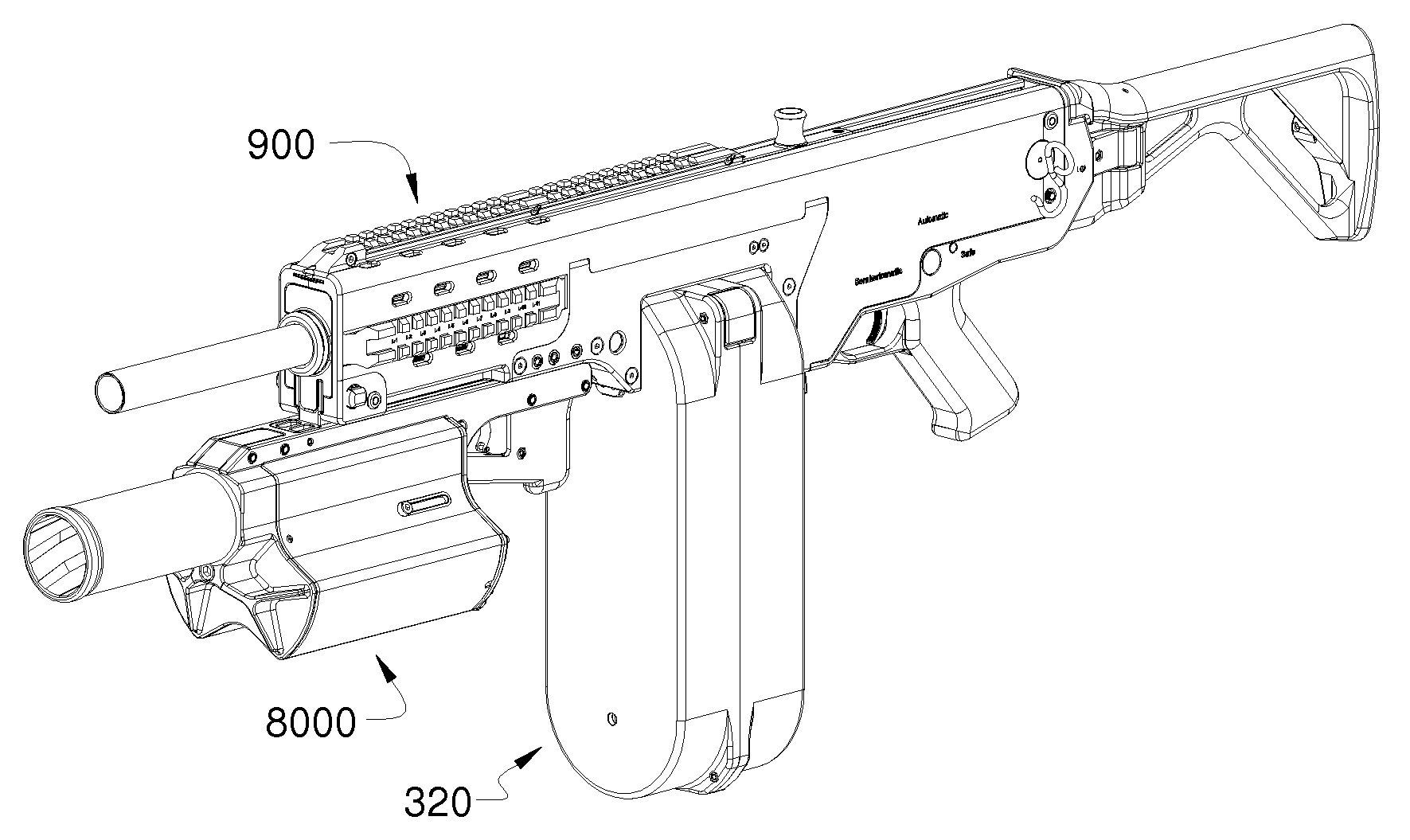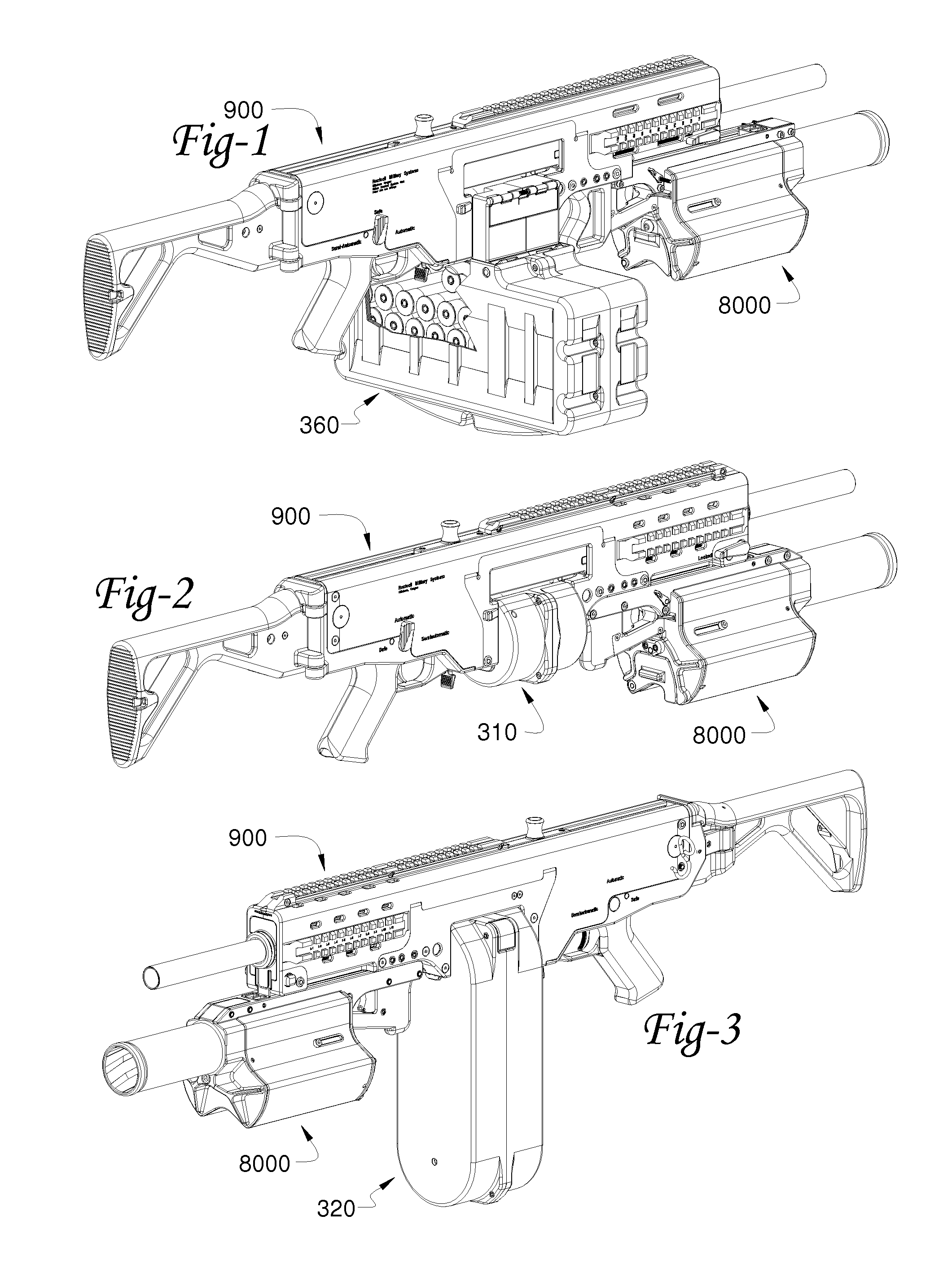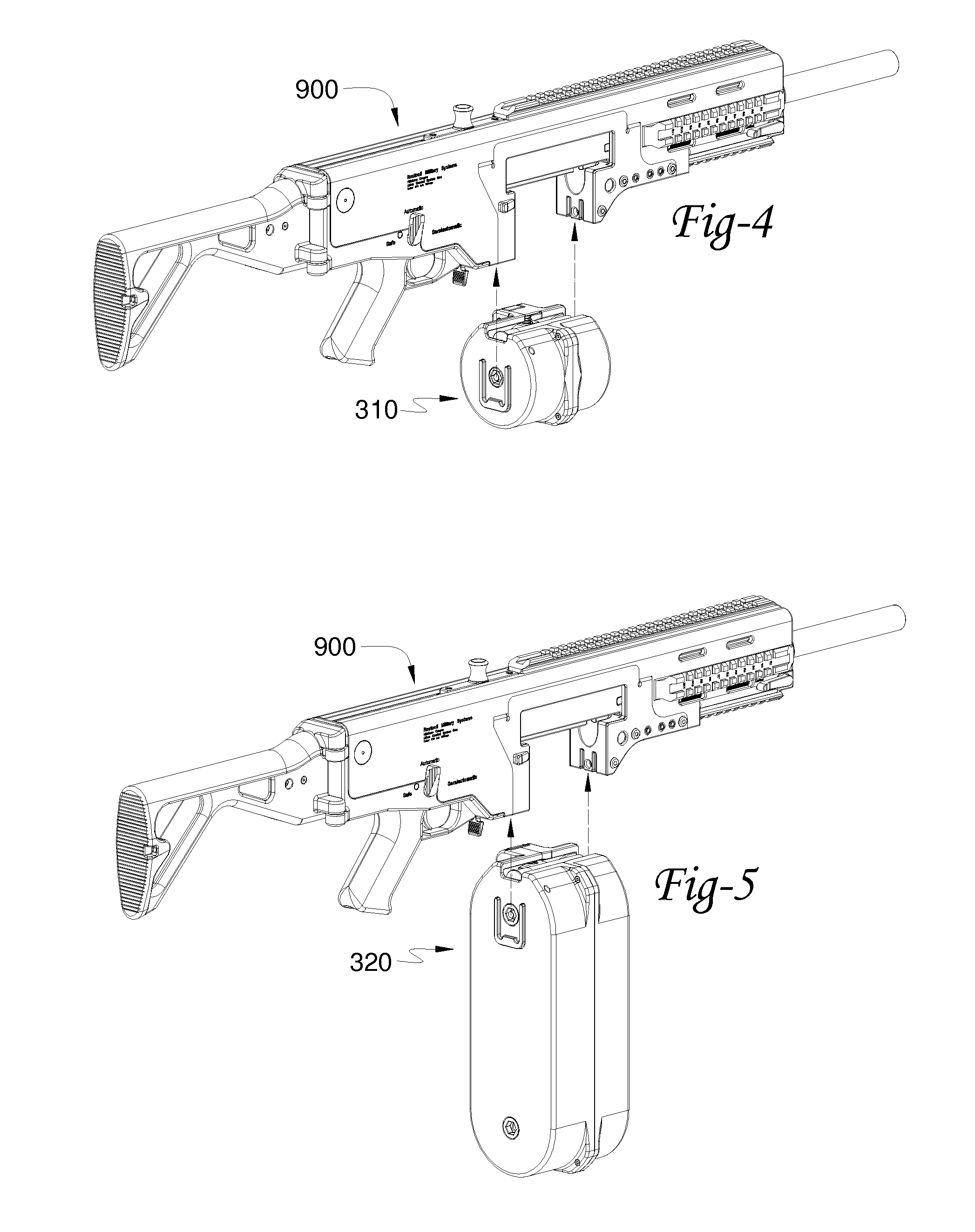If the soldiers' gun quits working in combat the soldier using it will probably be killed.
No longer is it safe or even smart to
mass troops or vehicles on a
battlefield.
Early on as a stopgap measure the
submachine gun was used and proved very effective in combat ranges less than 100 meters, but was found to be almost worthless beyond that range.
Yes they still exist, but recent history has clearly shown that these types of targets don't survive for long on today's electronic battlefield.
But still the military leaders persist on using them—mainly because there is no other creditable solution at hand.
None of the past private or government R&D programs attempting to fulfill these characteristics have achieved any real measure of success for a variety of technical reasons.
However the main problem has been from misdirection of the overall effort rather than the actual technical problems.
The biggest single problem was the mindset fixation of the military leaders on
point target weapons.
Any of these wounding elements are invariable fatal.
But the
hypervelocity also degrades the single
projectile accuracy to the point where first-found hits are an elusive dream.
Tests have shown that first-round hits with
hypervelocity projectiles under most combat conditions are practically impossible.
Controlled burst-fire is making do with what is available, but regrettably controlled burst-fire does not address the real problem.
However most assault rifles cannot obtain a high enough cyclic rate to be truly effective.
But the commercial shotguns were not designed for military use, although they can be customized to improve their military acceptability.
Specialized shotshell ammunition
ranging from CS gas to explosive shells has been experimented with from time to time, but with no real acceptance by the military.
For all the advantages the
shotgun can provide the military there has also been a serious set of technical limitations to prevented its acceptance as a mainstream military gun.
1.
Shotgun stocking and the use of tube magazines have prevented practical and effective automatic fire.a. The slow loading of tube magazines of
limited capacity makes automatic fire impractical.b. The shoulder stock found on most commercial
shotgun force the
shotgun to rapidly rise vertically off the target when fired. Uncontrollable vertical rise of the shotgun makes long burst impossible and even short burst impractical.
2. Very high
recoil loads, or what the laymen call kick. High
cartridge impulse has prevented adequate gun
controllability when automatic fire was attempted—unless the cyclic rate was reduced to less than 300 SPM. Automatic shotguns using cyclic rates higher than 300 SPM usually have proven to be uncontrollable and thus not practical.
3. Automatic shotguns using 10 round box magazines or even a 20 round drum magazines are limited by their overall loaded weight and bulk. Even a short engagement of just a few short burst depletes a 10 round box
magazine. A drum
magazine of 20 rounds or more may provide a longer burst, but its bulk and overall weight has limited fast gun handling in close quarters.
4. To obtain a measure of gun
controllability the cyclic rate of automatic shotguns have been reduced to 300 SPM or lower. This has usually been obtained by the use of a long bolt
stroke to reduce the recoil loading. However the long bolt
stroke usually requires a long
receiver, which results in a longer overall length for the same length
barrel.
However this shotshell results in a loading of only 9 lead
pellets.
Use of the 12 gauge 3-inch shotshell is increasing in popularity but has been limited.
Thus the even better 12-gauge 3½ inch shotshell is not currently used in most military shotgun because it would reduce the tube
magazine capacity by as much as three cartridges.
However unless something was done to reduce the recoil loads, to fire twice the number of 00 Buck
pellets per round fired would only exacerbate the
controllability issue of today's automatic shotguns.
The major problem with the military shotguns in use today is that they are really just commercial sporting shotguns that have been customized for use by the military.
Of the limitations sited above it is the lack of controllability in automatic fire and the
limited capacity of the tube magazine that have held back the shotgun from being accepted as a major squad level weapon.
The length of the magazine tube limits the capacity of a tube magazine and the length of the
barrel limits the length of the magazine tube.
Currently there is no shoulder-fired automatic gun in any modern military that uses a magazine with a capacity of under 10 rounds.
There are many technical reasons that limit use on a shotgun of box magazines having more than 10 rounds.
However the major problem with all link-belt feed systems is that reloading the link-belt into the gun feed
system requires the user to take the time to do it right—and the loading operation is not intuitive.
However the reloading of a loaded drum or box magazine into a gun is both fast and intuitive.
Another major limitation of the military shotguns in use today has been the shotshell ammunition provided for military use.
The problem was that unless a vital area was hit by the flechette during its through and through passage little damage would be actually done to the target.
However the ammunition fired lacked a critical capability—the ability to provide effective indirect fire.
The problem was that this basic capability could only be met by using an explosive shell.
Such a small bore
diameter would never be able to provide the blast to fragment ratio needed if fired from a 2¾ inch shotshell.
What is not well understood by many is that the impulse of the
cartridge cannot be reduced by mechanical means, only the
resultant recoil force spread out over a longer time base than the
cartridge operating cycle.
Realistically substantial reduction of the felt recoil force is not possible in repeating actions characterized by pump action shotguns.
However in practice
muzzle brakes are limited in how effective they are to the cartridge charge to
mass ratio coupled with the cartridge operational pressure.
In practice
muzzle brakes have been of little use on shotguns because they just don't have the right conditions to operate well.
This is because the shoulder pads flatten the spike of the recoil load, but no significant reduction in total felt recoil can be obtained.
However all gun buffers used on non-automatic guns are limited in the amount of felt recoil they can reduce because of they are limited in the amount of gun travel permitted when firing from the shoulder.
Use of a bolt buffer does flatten the spike loading resulting from the bolt slap but since the bolt
stroke into the bolt buffer is usually limited to 2-3 mm the resulting reduction in bolt slap spike loading is marginal.
However under
normal conditions its use requires an excessive amount of bolt recoil travel to be effective.
The problem is that a long bolt stroke usually results in a reduction of the gun cyclic rate.
However the buffer stroke was limited to only 5 mm and thus did not significantly reduce the bolt slap.
However nothing has been done to reduce the barrel to
receiver impact spike loads that occur after the unlocked barrel stops it recoil travel.
But the accelerator does not buffer the remaining barrel recoil
momentum before the
receiver finally stops the recoil travel of the barrel.
Other than using a very long bolt over-travel the gas-operated automatic actions offer no inherent way to stop the bolt recoil travel without creating a high felt recoil load.
Blowback operated gun automatic actions also inherently do not offer any way to stop the bolt recoil travel without creating a high felt recoil load, and they have the added
disadvantage of either a very high bolt recoil velocities or a large bolt
mass.
But this can only be done if both the barrel and bolt can be stopped in recoil without creating a spike recoil load.
However all current applications of this style of lock do not allow the barrel to move in recoil AFTER the barrel has been unlocked from the bolt.
In most automatic guns the components needed to control the mode of firing are located within the receiver and are not easily removed for service.
These
fire control selectors are not capable of being removed and installed on the left side of the receiver.
For a left-handed user locating the safety on the right side of the gun makes it difficult to reach and use.
However in the case of the Remington Arms auto-loading model 1100 shotgun there is no capability for automatic fire nor is there any design consideration for holding the bolt in the open-bolt position.
Historically it has been found that the telescoping shoulder stock method has an inherent
weakness and provides for an uncomfortable and poor interface with the users face.
Historically it has been found that using the pivoting shoulder stock method is also limited.
To pivot the shoulder stock onto the top of the receiver also may interfere with the sights mounted on the gun or make sighting the gun difficult.
This is because folding the shoulder stock to the right side will usually interfere with the ejection of the fired cases and cartridge links from the gun and can also interfere with gun charging.
Stowing the folding shoulder stock on the left side of the receiver is not good when a sling is used because it will push the gun out and away from the users body.
Also being next to the users body might cause the folding shoulder stock to interfere with something the user is wearing.
Another limiting feature of existing folding shoulder stocks is that they usually are difficult to remove and install.
Most magazine fed guns today are rather simple in design, however the link-belt fed LMG or SAW automatic guns usually are quite complex.
This usually results in LMG and SAW automatic guns being harder to service and maintain than magazine fed automatic guns.
The added complexity of a link-belt feed also results in a significant increase in the cost to fabricate when compared to the fabrication cost for a magazine fed gas-operated automatic gun.
Not only will this
abrasive cocktail stop the gun but will also abrasively
wear out gun components as the gun shoots.
However there is a
lower limit of gun weight that is dictated by the complexity of the gun, the physical size of the components that are needed to accomplish the functions assigned to them, and the physical requirements of the automatic gun action dynamics.
Normally the higher weight of the LMG and the SAW over an equally chambered
assault rifle results from the increased complexity of the linked-belt fed system and its functional requirements.
The large
caliber size of the cartridge imposes a practical limit on the number of chambers the cylinder can have.
These factors forced the grenade launcher in this embodiment to use a cylinder of only three chambers and also limited the practical options available for loading and unloading.
Swinging such a large cylinder out from the frame would the frame and cylinder cradle needed to hold the cylinder overly complex.
The cylinder swing-out frame design would also drastically increase the overall weight of the grenade launcher.
The use of the break-open frame design to
expose the cylinder face is impractical for two major reasons.
1. Break-open frames inherently weaken the strength of the frame.
The only serious drawback to the loading gate is that only one cartridge can be loaded at a time.
Since there are only three cartridges to be loaded this drawback is somewhat nullified.
These automatic gun modifications can and usually do require major work.
Furthermore once grenade launcher has been removed from the host automatic gun it is not operational—meaning it cannot be fired independent of a host gun.
 Login to View More
Login to View More  Login to View More
Login to View More 


